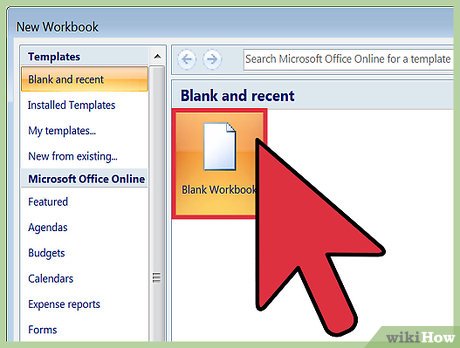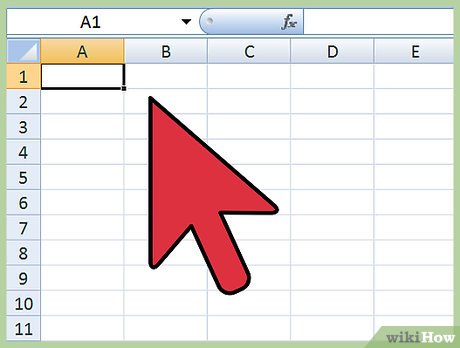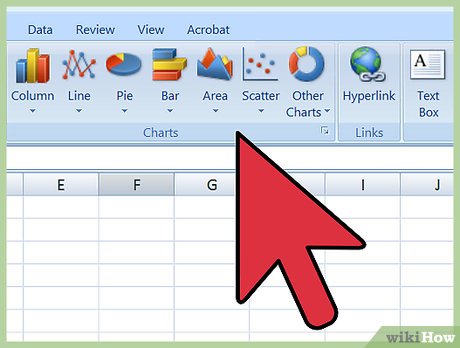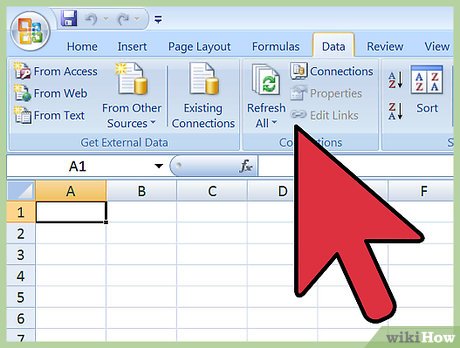How to Create an Insectoid Pattern in Microsoft Excel
Part 1 of 3:
The Tutorial
-
 Start a new workbook by saving the old workbook under a new name. Save the workbook into a logical file folder.
Start a new workbook by saving the old workbook under a new name. Save the workbook into a logical file folder. -
 Complete all changes in the upper Defined Variables section.
Complete all changes in the upper Defined Variables section.- A3: "=1440/Rrs"
- A4: 1
- TURNS: 9
- S's Count: 6
- top: "=ROUND((-B4*PI())+(Adj),0)" (=968061)
- AAA: 1.00244189810508
- Divisor: -34,760,448,114.6
- YN: N
- Factor: "=IF(E4="Y",IF(ODD(S_COUNT)=S_COUNT,-S_COUNT*0.01,S_COUNT*0.01),-0.25)"
- New Variable: Select cell F2 and enter 2. Insert Name Define name Power to cell $F$2. Format Cell FIll Bright Turquoise Blue and Font Bold Black. Format Number Number Custom "Power " 0.0000 (with quote marks).
- H1: .92 (obtains result in Sync1 of 1.48859127)
- J1: .96 (obtains result in Sync2 of 2.513312629)
- all the rest calculate the same way or have the same value as before.
-
 Complete all changes in the lower Data columns section:
Complete all changes in the lower Data columns section:- A7:A1447: No change
- B7 amd B8:B1447: No change
- C7 and C8:C1447: No change
- D7:D1447: "=IF(COS((ROW()-7)*PI()/180*Factor)
- E7:E1447: "=IF(SIN((ROW()-7)*PI()/180*Factor)
- F7:F1447: Probably no change -- "=IF(A7=0,F6,((PI())*((SIN(B7/(C7*2))*GMLL*COS(B7)*GMLL*(COS(B7/(C7*2)))*GMLL)+D7)))"
- G7:G1447: Probably no change -- "=IF(A7=0,G6,((PI())*((SIN(B7/(C7*2))*GMLL*SIN(B7)*GMLL*(COS(B7/(C7*2)))*GMLL)+E7)))"
- H7:H1447: No change -- "=F7*GMLL*Sync1"
- I7:I1447: No change -- "=G7*GMLL*Sync1"
- J7:J1447 and K7:K1447 No change.
Part 2 of 3:
Explanatory Charts, Diagrams, Photos
- (dependent upon the tutorial data above)
-
 Create the chart.
Create the chart.- Select F7:G1446 and, using Chart Wizard or the Ribbon, select Charts, All/Other, Scatter Smoothed Line Scatter. Copy or cut the small chart atop the data and activate the Chart worksheet and paste into cell A1. Hover over lower right corner until the cursor changes to a double arrowhead and then pull the sheet into an expanded version to about G54.
- Using Chart Layout, get rid of both axes and both vertical and horizontal grid lines and the legend.
- Set Line Weight to 1, Dark Blue.Smoothed Line.
- Set Shadow to cobalt blue or Prussian blue (I forget its name), Style Outer, Size 91%, Blur 5.5, Distance 48 point, Transparency 17% per Current Selection Series1 and Format Selection of Chart Layout.
- Set Current Selection to Chart Area and Format Selection Line to No Line., Fill to No Fill, OK.
- Set Current Selection to Plot Area and Format Selection to Solid Fill White Transparency 0%, Line to No Line, Shadow to Checked Outer Black, Size 74%, Blur 69.5 Pt., Distance 100 pt., and Transparency 77%; Glow - No Glow; 3-D Format to Bevel Top Cool Slant Width 13 pt and Height 6 pt, Bottom None; Depth & Surface - Material = Clear, Lighting blank, Angle = 0 degrees, OK. Done!
-
 Activate the Data worksheet and copy A1:J6 -- the "live" formulas -- and then activate the Saves worksheet and paste the live formulas in. Then activate the Data sheet and with the Shift Key depressed, do Copy Picture of A1:J8 and activate the Saves worksheet and do shift key + Paste Picture, or just do Copy and paste special formats, then values. The first way is easier a little because of the long note overflowing the column widths. Then activate the Chart worksheet and do shift key + Copy and Paste Picture into the Saves worksheet under the saved data. The reason for pasting the values also is because when formulas get pasted below this picture, they do not have the same references as when pasted at the top, so the results are different than on the the Data worksheet. But formulas still need to be preserved that have been altered, else it would be quite difficult to reconstruct images like this one years later.
Activate the Data worksheet and copy A1:J6 -- the "live" formulas -- and then activate the Saves worksheet and paste the live formulas in. Then activate the Data sheet and with the Shift Key depressed, do Copy Picture of A1:J8 and activate the Saves worksheet and do shift key + Paste Picture, or just do Copy and paste special formats, then values. The first way is easier a little because of the long note overflowing the column widths. Then activate the Chart worksheet and do shift key + Copy and Paste Picture into the Saves worksheet under the saved data. The reason for pasting the values also is because when formulas get pasted below this picture, they do not have the same references as when pasted at the top, so the results are different than on the the Data worksheet. But formulas still need to be preserved that have been altered, else it would be quite difficult to reconstruct images like this one years later. -

-

Part 3 of 3:
Helpful Guidance
- Make use of helper articles when proceeding through this tutorial
- See the article How to Create a Spirallic Spin Particle Path or Necklace Form or Spherical Border for a list of articles related to Excel, Geometric and/or Trigonometric Art, Charting/Diagramming and Algebraic Formulation.
- For more art charts and graphs, you might also want to click on Category:Microsoft Excel Imagery, Category:Mathematics, Category:Spreadsheets or Category:Graphics to view many Excel worksheets and charts where Trigonometry, Geometry and Calculus have been turned into Art, or simply click on the category as appears in the upper right white portion of this page, or at the bottom left of the page.
5 ★ | 1 Vote
You should read it
May be interested
- How to Create a Squiggly Frame Pattern in Microsoft Excel
 in this article, you'll learn to make the 'squiggly frame' pattern and image below, and the dozens of variations the file permits therefrom. become familiar with the basic image to be created:
in this article, you'll learn to make the 'squiggly frame' pattern and image below, and the dozens of variations the file permits therefrom. become familiar with the basic image to be created: - How to Create a Skewed Spheroids Pattern in Microsoft Excel
 in this article, you'll learn to make the 'skewed spheroids' pattern like the image below, and the dozens of variations the file permits therefrom. this article relies on the previous accomplishment of the five articles preceding it:
in this article, you'll learn to make the 'skewed spheroids' pattern like the image below, and the dozens of variations the file permits therefrom. this article relies on the previous accomplishment of the five articles preceding it: - How to create a pie chart in Microsoft Excel
 pie charts are a great tool for visualizing information. it allows users to see the partial relationship with the entire data.
pie charts are a great tool for visualizing information. it allows users to see the partial relationship with the entire data. - How to Create a Chart in Excel
 in this article, tipsmake will show you how to create visual data visualizations in microsoft excel using pie charts. open the microsoft excel program.
in this article, tipsmake will show you how to create visual data visualizations in microsoft excel using pie charts. open the microsoft excel program. - How to Reset Lock Pattern on Android Tablet
 today's tipsmake will show you how to create or change the home screen unlock pattern of your android tablet. you can also access your tablet if you forget your unlock pattern. if you use a version released after android 4.4 (kitkat), the only way to restore the unlock pattern (if you forget it) is to erase all data on the tablet and reinstall it from scratch.
today's tipsmake will show you how to create or change the home screen unlock pattern of your android tablet. you can also access your tablet if you forget your unlock pattern. if you use a version released after android 4.4 (kitkat), the only way to restore the unlock pattern (if you forget it) is to erase all data on the tablet and reinstall it from scratch. - Complete tutorial of Excel 2016 (Part 3): How to create and open existing spreadsheets
 today, we continue to share with you how to create and open spreadsheets available in excel 2016.
today, we continue to share with you how to create and open spreadsheets available in excel 2016. - How to use Excel Online online for free
 excel online is located in the completely free microsoft office online suite with full features, from the ability to create spreadsheets, use calculation functions, ...
excel online is located in the completely free microsoft office online suite with full features, from the ability to create spreadsheets, use calculation functions, ... - Link download Microsoft Excel 2019
 microsoft excel is a software program created by microsoft that allows users to organize, format and calculate data with formulas using a spreadsheet system.
microsoft excel is a software program created by microsoft that allows users to organize, format and calculate data with formulas using a spreadsheet system. - A complete guide to Excel 2016 (Part 4): How to store and share spreadsheets
 whenever you create a new spreadsheet in excel, you need to know how to save to access and edit later. like previous versions of excel, you can save local files to your computer.
whenever you create a new spreadsheet in excel, you need to know how to save to access and edit later. like previous versions of excel, you can save local files to your computer. - How to use notes in Microsoft Excel
 comments in microsoft excel are simple text messages associated with individual cells. they are often used to add context to the cell's contents, explaining a few small details about the cell.
comments in microsoft excel are simple text messages associated with individual cells. they are often used to add context to the cell's contents, explaining a few small details about the cell.














 How to Acquire Bézier Curves Using Excel
How to Acquire Bézier Curves Using Excel How to Work with Excel Cubes
How to Work with Excel Cubes How to Create Artistic Patterns in Microsoft Excel
How to Create Artistic Patterns in Microsoft Excel How to Create a Uniform Spiral Pattern in Microsoft Excel
How to Create a Uniform Spiral Pattern in Microsoft Excel How to Create a Sin and Cos Circle in Excel
How to Create a Sin and Cos Circle in Excel